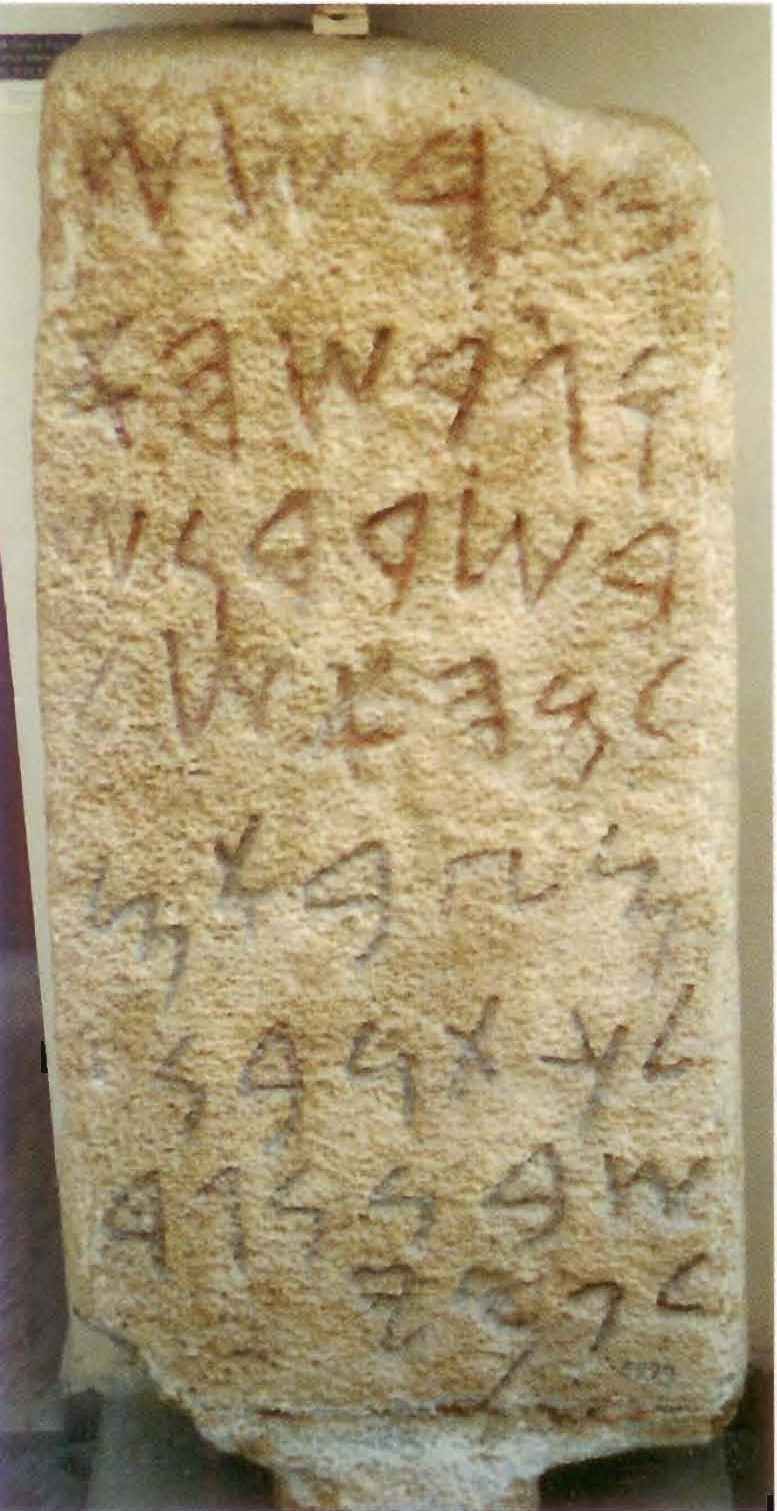The Nora Stone, c. 831-785 BCE
Nora Stone
Discovered in 1773 in Nora, a city on the southern coast of Sardinia, this 3.5-foot-high and nearly 2-foot-wide slab bears an eight-line inscription in Semitic letters written Phoenician style (right to left). Professor Frank Moore Cross believes there once were two additional lines at the top.
The inscription begins “at Tarshish,” a common place-name derived from a Semitic root meaning “to smelt.” Tarshish may have been a Phoenician mining town in Sardinia. The inscription continues “and he drove them out. / Among the Sardinians he is [now] at peace, / (and) his army is at peace- / Milkatōn son of / Šubna’, general / of (king) Pummay.” Pummay, also written Pu’myatōn and known in Greek as Pygmalion, ruled Tyre from 831 to 785 BCE. Based on Pummay’s dates and the shape and stance of the letters, Cross dates the Nora Stone inscription to 825 BCE. He believes the Phoenicians sent an army to Sardinia that year to quell a local revolt and protect their mining interests in the area.
Shanks, Hershel, ed. Frank Moore Cross- Conversations with a Bible Scholar. Washington DC- Biblical Archaeological Society, 1994.




